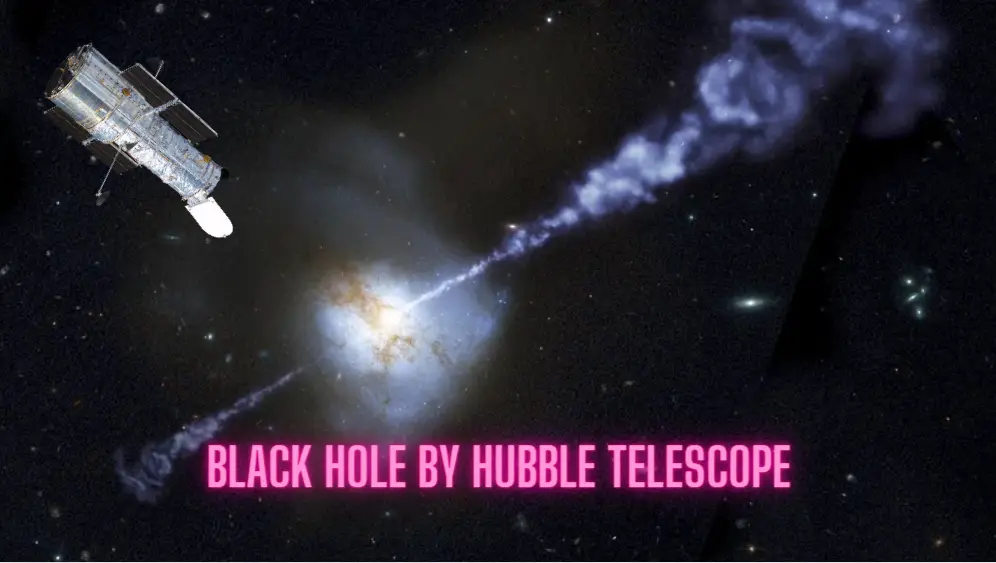The Hubble Telescope, which is well-known for its tremendous advances to our understanding of the cosmos, has once again enthralled both professional astronomers and amateur space fans with its pioneering observations of black holes. These mysterious heavenly bodies have long been a source of fascination for scientists, and the Hubble telescope has been an indispensable tool in the process of elucidating the mysteries that surround them. Hubble has revealed insights into the nature and behavior of black holes that have never been seen before. These insights were made possible by the utilization of cutting-edge technology and precise observations.
The Unseen Made Visible Black holes, also known as the “dark hearts” of the universe, are places in space that have such a powerful gravitational attraction that nothing, not even light, can escape their grasp. They are often referred to as the “dark hearts” of the universe. The investigation of black holes presents a one-of-a-kind set of obstacles due to the elusive and invisible nature of black holes. On the other hand, thanks to its high-resolution imaging capabilities, the Hubble telescope has been able to throw light on a number of mysteries concerning the cosmos.
One of the most important things that the Hubble telescope has done is investigate the supermassive black holes that are found at the centers of galaxies. This is one of the most important contributions that the Hubble telescope has made. These behemoths, whose masses are millions or even billions of times that of our sun, play an important part in the process through which the evolution of the galaxy occurs. The Hubble Space Telescope has shed light on the fact that supermassive black holes are not immobile entities but rather dynamic powerhouses that exert an influence on the environment around them by means of their gravitational pull and powerful radiation. Hubble has supplied evidence supporting the existence of these extraterrestrial monsters by observing the behavior of stars around these black holes. This has also enhanced our understanding of the significant impact that these black holes have on galaxies.
Unveiling the Mysteries of Stellar Mass Black Holes In addition to making contributions to the research on supermassive black holes, Hubble has also made contributions to the research on stellar mass black holes. These are produced from the debris left behind by big stars that have experienced a supernova explosion when their nuclear fuel supply has run out. Hubble has made it possible for scientists to obtain more accurate measurements of the mass and features of stellar mass black holes through the use of precise studies of binary star systems. These binary star systems consist of a black hole and a companion star that are engaged in a gravitational embrace. Because of these discoveries, our comprehension of the life cycles of massive stars and the processes that ultimately result in the development of black holes has been significantly improved.
Gravitational Lensing and the Detection of Black Holes The Hubble telescope has played a significant role in the detection and characterization of black holes through the use of gravitational lensing. This is another one of the telescope’s great accomplishments. Because of the powerful gravitational fields that they emit, black holes are capable of warping and bending light that is traveling close to them. This gravitational lensing effect gives astronomers a one-of-a-kind opportunity to indirectly identify and study black holes, which is a huge step forward in the field. Hubble has helped in the identification and study of these enigmatic phenomena across vast distances, adding to our understanding of their distribution and evolution throughout the universe. This was accomplished by carefully measuring the distortion of light that is generated by the gravitational attraction of black holes.
The Hubble telescope has helped us make great headway in our understanding of black holes; yet, the future holds the prospect of even more interesting discoveries in this field of research. Hubble’s observations will be complemented by those made by the forthcoming James Webb Space Telescope (JWST), which is scheduled for launch in the not too distant future. JWST will investigate black hole riddles in greater depth. Astronomers will be able to observe the birth and development of black holes when they are still in their infant stages because to the JWST’s cutting-edge infrared capabilities. These capabilities will reveal hitherto unattainable insights into the early universe.
As a result of the work done by the Hubble Space Telescope, our comprehension of black holes has been fundamentally altered, and we now have a better knowledge of the deep role that black holes play in the universe. Our understanding of these mysterious creatures has been expanded because to Hubble’s findings, which cover everything from supermassive black holes to star mass black holes. Our knowledge of the prevalence and distribution of black holes around the cosmos has been significantly enhanced as a result of Hubble’s capacity to detect and investigate black holes through the process of gravitational lensing. We may anticipate an even more in-depth investigation of black holes after the launch of the James Webb Space Telescope, which will bring us that much closer to understanding the mysteries of these fascinating cosmic occurrences.
![]()
